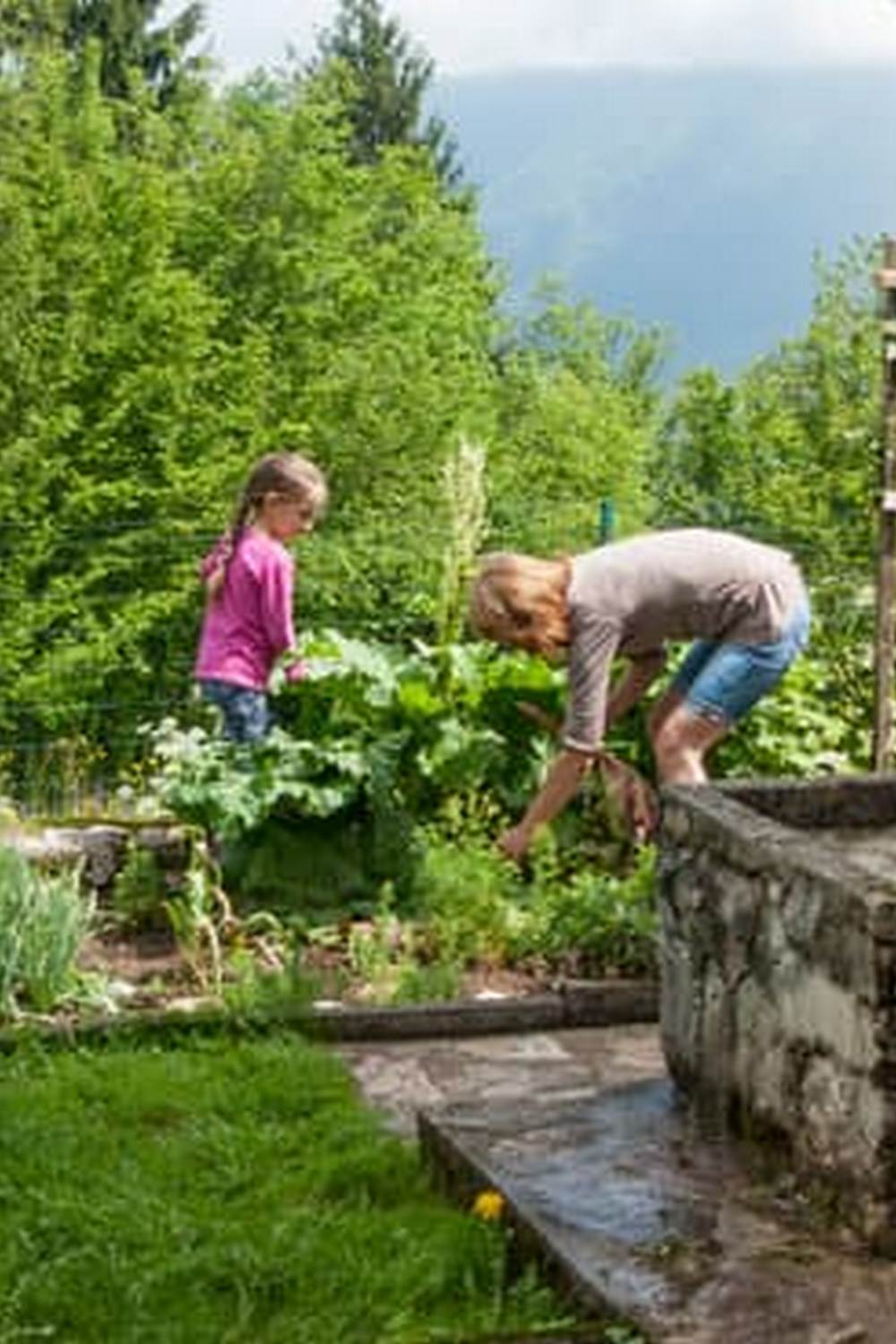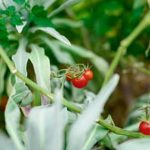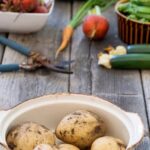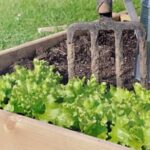As the leaves begin to change and the air becomes crisp, many gardeners are getting ready for the beauty of fall gardening. In this section, we will explore the joys of gardening in the fall, particularly focusing on growing vegetables during this season. From planning and preparation to maintenance and harvesting, there’s a lot to consider when it comes to tending to your fall vegetable garden.
Gardening in the fall brings its own unique set of challenges and rewards. The cooler temperatures and potential for frost can make growing certain vegetables a bit trickier, but with proper planning and care, a bountiful harvest is well within reach. Whether you’re a seasoned gardener or just starting out, there’s something truly magical about embracing all that fall has to offer right in your own backyard.
In this article, we will delve into key aspects of fall vegetable gardening, from selecting the right veggies to harvesting your bounty. We’ll also discuss how to extend the growing season using cold frames and row covers, as well as offer some delicious recipes for enjoying your harvest. So, let’s roll up our sleeves and get ready to experience the beauty of fall gardening in all its glory.
Planning Your Fall Vegetable Garden
When it comes to planning your fall vegetable garden, choosing the right vegetables is crucial to ensure a successful harvest. One of the best things about gardening in the fall is that there are many delicious and nutritious vegetables that thrive in cooler temperatures. This means you can continue to enjoy fresh produce well into the autumn months.
Choosing Cool-Season Vegetables
When selecting which vegetables to plant for your fall garden, it’s important to focus on cool-season crops that can withstand lower temperatures. Some popular choices for fall planting include leafy greens like kale, spinach, and lettuce, as well as root vegetables such as carrots, beets, and radishes. Cruciferous vegetables like broccoli, cauliflower, and Brussels sprouts also do well in the fall. These plants not only tolerate cooler weather but actually taste better after being exposed to light frost.
Consider Your Location
Before deciding on which vegetables to grow in your fall garden, it’s essential to consider your specific location and climate. Different regions have varying average first frost dates, so it’s crucial to choose vegetables with maturity dates that align with your local climate. Additionally, take note of the amount of sunlight your garden receives in the fall as this will also impact the growth and development of your chosen crops.
Succession Planting
To make the most of your fall vegetable garden, consider practicing succession planting. This involves staggering planting times for different crops so that you can enjoy a continuous harvest throughout the season. As you harvest one crop, you can replant that space with another variety that will mature later in the season. This method allows you to maximize your garden space and extend the bounty of fresh vegetables well into the fall months.
By carefully considering which cool-season vegetables to plant based on your location and using succession planting techniques, you can ensure a bountiful and diverse harvest from your fall vegetable garden.
Preparing Your Garden for Fall Planting
When preparing your garden for fall planting, it’s essential to focus on the condition of your soil, the use of mulch, and the benefits of compost. These three elements are crucial in ensuring that your fall vegetable garden will thrive and produce a bountiful harvest.
Soil Preparation
Before planting your fall vegetables, it’s important to assess the condition of your soil. Make sure to clear out any debris or weeds from your garden beds. You can also consider conducting a soil test to determine its pH levels and nutrient content. Based on the results, you might need to amend your soil with organic matter or fertilizers to create an optimal growing environment for your vegetables.
Using Mulch
Applying mulch in the fall is beneficial for various reasons. It helps in conserving moisture, regulating soil temperature, suppressing weed growth, and improving overall soil health. Consider using organic materials such as straw, leaves, or wood chips as mulch for your fall vegetable garden.
Adding Compost
Incorporating compost into your garden beds provides essential nutrients for your fall vegetables. Compost also improves soil structure and promotes beneficial microbial activity. Whether you purchase compost from a local supplier or create it yourself through a composting system at home, adding this organic matter will enrich the soil and support healthy plant growth.
By paying attention to these factors when preparing your garden for fall planting, you can set the stage for a successful growing season and ensure that your fall vegetables thrive in their new environment.
Tips for Fall Vegetable Garden Maintenance
Fall is a wonderful time to grow a variety of vegetables in your garden, and with the right maintenance, you can ensure a bountiful harvest. Here are some tips for maintaining your fall vegetable garden to ensure healthy and thriving plants.
1. Watering: As the weather begins to cool down in the fall, it’s important to adjust your watering schedule accordingly. While your vegetables still need regular moisture, they may not need to be watered as frequently as they did during the hotter months. Be sure to water deeply to encourage strong root growth, and monitor the soil moisture regularly to ensure your plants are getting just the right amount of water.
2. Weeding: Weeds can quickly take over a garden if left unchecked, so be diligent about keeping them at bay. Regularly inspect your garden for any signs of weed growth and carefully remove them by hand or with tools. Adding a layer of mulch around your plants can also help suppress weed growth while retaining soil moisture.
3. Pest Control: Fall brings with it its own set of pests that may target your vegetable garden. Keep an eye out for common fall garden pests such as aphids, cabbage worms, and squash bugs, and take proactive measures to control them. Consider using natural pest control methods such as neem oil or insecticidal soap to keep these unwelcome visitors at bay without harming beneficial insects.
By paying close attention to the maintenance needs of your fall vegetable garden, you can ensure that it continues to thrive throughout the season, ultimately leading to a successful harvest of delicious and nutritious produce.
Harvesting Fall Vegetables
As the summer heat begins to wane and the days become shorter, it’s time to start thinking about harvesting your fall vegetables. Whether you’ve grown hearty greens like kale and spinach, or root vegetables like carrots and beets, knowing when and how to harvest your bounty is essential for enjoying a successful fall garden.
One key factor in harvesting fall vegetables is timing. Most fall vegetables are ready for harvest when they reach a mature size but before the first hard frost. It’s important to keep an eye on the weather forecast in your area so that you can plan your harvest accordingly. Additionally, different types of vegetables may have different optimal harvest times, so it’s crucial to familiarize yourself with the specific needs of each crop.
When it comes to the actual harvest process, using the right tools is important to avoid damaging the plants or their produce. For example, using a sharp knife or shears to carefully cut leafy greens at their base will help prevent unnecessary stress on the plant.
On the other hand, root vegetables like radishes and turnips can be gently pulled from the ground by hand. Properly storing your harvested fall vegetables in a cool place will also help extend their freshness and shelf life.
| Vegetable | Optimal Harvest Time |
|---|---|
| Kale | After reaching full size but before first frost |
| Carrots | When roots are bright orange and large enough to eat |
| Spinach | When leaves are about 6 inches long |
By paying attention to these details and putting in some extra care during the harvesting process, you can enjoy a flavorful and nutritious bounty from your fall vegetable garden throughout the season. So roll up your sleeves, pick up those gardening gloves, and get ready to savor all that autumn has to offer.
Extending the Fall Vegetable Season
As the days grow shorter and the temperatures begin to drop, many gardeners may assume that their vegetable gardens are coming to an end. However, with the use of cold frames and row covers, it is possible to extend the fall vegetable season and continue enjoying fresh produce well into the colder months. These protective structures can help create a microclimate that shields plants from frost and harsh weather, allowing them to thrive even as winter approaches.
Cold frames are typically bottomless boxes with transparent lids that can be placed directly over garden beds. They work by capturing and retaining heat from the sun, creating a warm environment that is conducive to plant growth. Additionally, they provide protection from wind and cold temperatures, allowing delicate vegetables to continue growing even as the weather outside becomes less favorable.
Row covers are another effective tool for extending the fall vegetable season. Made from lightweight fabric or plastic, these covers can be draped over rows of plants or individual crops, providing insulation while still allowing air, sunlight, and water to reach the plants.
Using cold frames and row covers can offer numerous benefits for fall gardening in vegetables. Not only do they protect crops from frost damage and harsh weather conditions, but they can also help regulate temperature and moisture levels, creating an ideal growing environment for a variety of vegetables. By using these protective structures, gardeners can enjoy a longer growing season and continue harvesting fresh produce well beyond the traditional end of summer.
Fall Vegetable Recipes
As the cooler weather sets in and your fall vegetables are ready for harvest, it’s time to enjoy the fruits of your labor in delicious dishes. From savory soups to hearty casseroles, there are countless ways to savor the flavors of your fall garden bounty. Here are a few fall vegetable recipes to inspire you as you celebrate the harvest season:
- Roasted Butternut Squash Soup with Sage: This creamy and comforting soup is perfect for chilly fall evenings. Roasting the butternut squash brings out its natural sweetness, while fresh sage adds a fragrant and earthy flavor.
- Brussels Sprouts and Apple Salad: This refreshing salad combines the crispiness of Brussels sprouts with the sweetness of apples for a delightful contrast of flavors and textures. Tossed in a tangy vinaigrette, it’s an excellent side dish for any fall meal.
- Harvest Vegetable Casserole: A medley of fall vegetables such as carrots, parsnips, and turnips come together in this hearty casserole. Topped with a buttery breadcrumb crust, it’s a satisfying and comforting dish that celebrates the best of autumn produce.
In addition to these recipes, consider incorporating your freshly picked fall vegetables into classic comfort foods like stews, pot pies, and roasted vegetable medleys. The rich flavors and vibrant colors of your homegrown produce will elevate any dish and make each meal a celebration of the autumn harvest. So roll up your sleeves, gather your fall vegetables from the garden, and let their natural goodness shine in your kitchen.
With an abundance of fresh fall vegetables at your disposal, there’s no limit to the delicious dishes you can create to showcase their flavors. Whether you’re whipping up a simple side dish or preparing a lavish feast, let your homegrown produce take center stage on the dining table. Embrace the creativity that comes with using seasonal ingredients from your own backyard – it’s one of the most rewarding aspects of gardening in the fall vegetables.
Conclusion
In conclusion, gardening in the fall can be a rewarding and magical experience for both novice and experienced gardeners. By following the tips and guidelines provided in this article, you can create a thriving vegetable garden in your own backyard that will yield a bountiful harvest of delicious produce. From choosing the right vegetables to extending the fall season with cold frames and row covers, there are many ways to make the most of your fall gardening efforts.
As you embrace the beauty of fall gardening, remember to savor the process and enjoy the fruits of your labor. There is something special about being able to harvest fresh vegetables from your own garden and use them in delicious dishes for yourself and your loved ones. Whether it’s a hearty butternut squash soup or roasted root vegetables, there are countless fall vegetable recipes waiting for you to try.
So as the temperatures begin to cool and the leaves start to change, take advantage of this wonderful time of year to cultivate a thriving fall vegetable garden. With proper planning, preparation, and maintenance, you can experience the magic of fall gardening right in your own backyard. Happy gardening.

If you’re looking to get into vegetable gardening, or are just looking for some tips on how to make your current garden better, then you’ve come to the right place! My name is Ethel and I have been gardening for years. In this blog, I’m going to share with you some of my best tips on how to create a successful vegetable garden.





